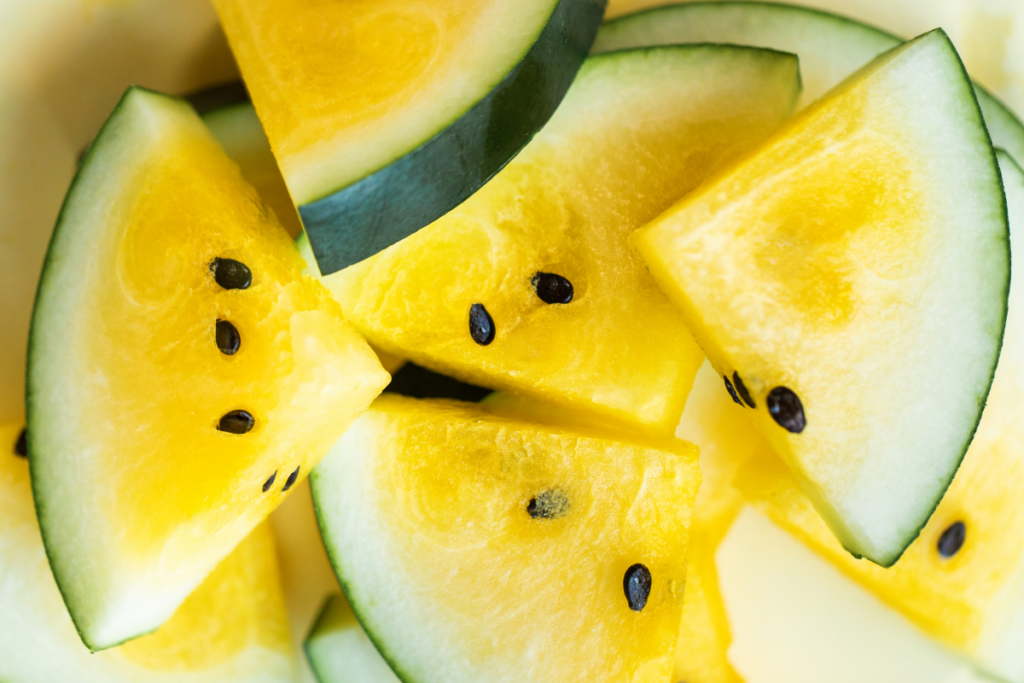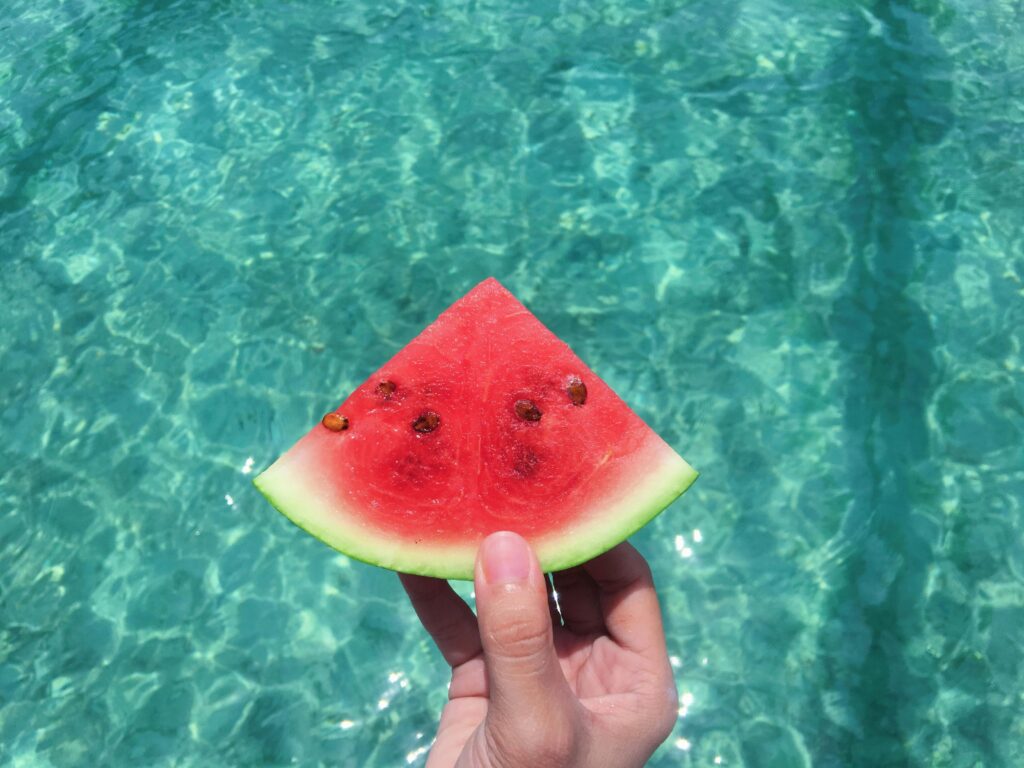In honor of National Watermelon Day on August 3, 2024, we thought we’d see just how much there is to know about this very large fruit—and there is a lot!
The quintessential summer fruit, watermelon is not just a delicious treat but also a nutritional powerhouse. Known scientifically as Citrullus lanatus and belonging to the Cucurbitaceae family, watermelon shares its lineage with cucumbers, pumpkins, and squash. With over 300 varieties cultivated in the United States and South America, watermelon is available year-round in an array of shapes, colors, and sizes. Let’s explore the wonders of watermelon, from its health benefits to its many varieties.
Health Benefits of Watermelon
Hydration
Watermelon is 92% water, making it an excellent choice for staying hydrated, especially during the hot summer months. It’s also low in calories while rich in vitamins A, C, and B6, as well as antioxidants like lycopene and amino acids such as citrulline.
Heart Health
Lycopene is essential for cardiovascular health, helping to reduce inflammation and oxidative stress. Watermelon’s high concentration of this antioxidant can contribute to lowering the risk of heart disease.
Muscle Soreness
The amino acid citrulline found in watermelon can help reduce muscle soreness, making it a favorite among athletes. Drinking watermelon juice before a workout can help improve exercise performance and recovery.
Skin Health
Rich in vitamins A and C, watermelon supports skin health by promoting cell regeneration and collagen production. This can result in a more youthful and glowing complexion.
Types of Watermelon

Seeded Watermelon
The classic watermelon comes in a variety of sizes, ranging from 15 to 45 pounds, and can be round, long, or oblong. While the seeds can be a minor inconvenience, many purists believe seeded watermelons have a richer flavor.
Seedless Watermelon
Due to high demand, seedless watermelons have become the most popular variety. Weighing between 10 to 25 pounds, these watermelons are achieved through hybridization, not genetic engineering. They are known for their crisp texture and deep red flesh.
Mini Watermelon
Petite “personal watermelons” weigh between 1 to 7 pounds and are easy to handle. Their thinner rinds mean more flesh per pound, making them ideal for small households or individual servings.
Yellow & Orange Watermelon
These varieties lack the lycopene that gives red-fleshed watermelon its color. Weighing between 10 to 30 pounds, yellow and orange watermelons add a surprising and delightful element to any dish.
Watermelon: Fruit or Vegetable?
The debate over whether watermelon is a fruit or a vegetable is ongoing. Botanically, watermelon is a fruit, similar to tomatoes and pumpkins, originating from a vine in southern Africa. However, it belongs to the cucurbitaceous plant family of gourds, which includes cucumbers, squash, and pumpkins. According to Webster’s dictionary, a vegetable is anything made or obtained from plants. Since watermelon is grown using vegetable production systems, it can also be classified as a vegetable.
Culinary Uses

As a Fruit
Watermelon is commonly used as a fruit. It can be enjoyed fresh, cubed, sliced, or balled. It’s a sweet enhancer to everyday meals and a refreshing addition to salads.
As a Vegetable
In places like China, the outer rind of the watermelon is used as a vegetable. It’s stir-fried, stewed, and often pickled. Pickled watermelon rind is also popular in Russia and the southern United States.
Historical Roots
The origins of watermelon trace back to the deserts of southern Africa, where it still grows wild today. Ancient Egyptians were among the first to harvest watermelons about 5,000 years ago, often placing them in burial tombs to nourish kings in the afterlife. Watermelons made their way to countries along the Mediterranean Sea via merchant ships and reached China by the 10th century. By the 13th century, watermelons had spread throughout Europe.
Choosing the Perfect Watermelon
When selecting a watermelon, use the Look, Lift, Turn method:
- Look: Choose a firm watermelon free from bruises, cuts, or dents.
- Lift: It should feel heavy for its size, as it’s mostly water.
- Turn: The underside should have a creamy yellow spot, indicating ripeness.

Fun Facts
- The first recorded watermelon harvest occurred nearly 5,000 years ago in Egypt.
- Early explorers used watermelons as canteens.
- Watermelon is 100% edible, including the seeds and rind.
Whether you consider watermelon a fruit or a vegetable, there’s no denying its versatility and health benefits. With a variety of types to choose from and countless ways to enjoy it, watermelon is a delightful addition to any diet. Ready to experience the wonders of watermelon yourself? Make it a staple in your kitchen and enjoy the refreshing taste and numerous health benefits it offers.
Happy eating!
 Food
Food Farmers
Farmers Sustainable Living
Sustainable Living Living Planet
Living Planet News
News